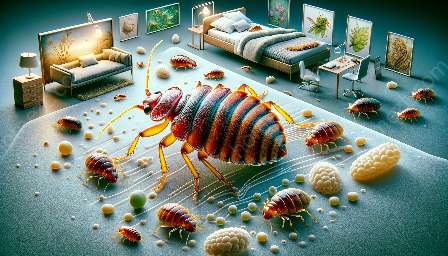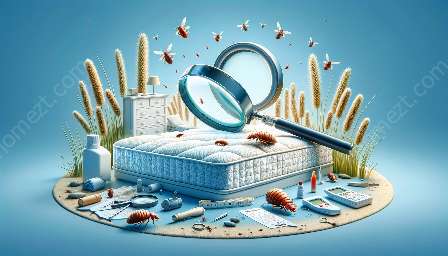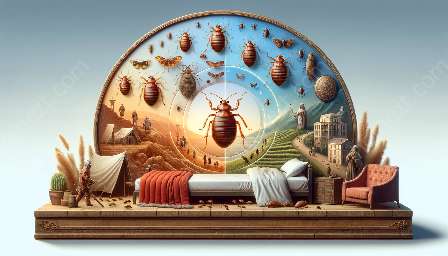Bed bugs are a persistent nuisance, often requiring chemical control measures to effectively eradicate infestations. In this comprehensive guide, we will explore the use of chemical treatments in pest control for bed bugs, addressing their biology, behavior, and the most effective treatments available. The goal is to provide you with the knowledge needed to combat bed bugs and protect your home.
Understanding Bed Bugs
Bed bugs (Cimex lectularius) are small, reddish-brown parasitic insects that feed on the blood of humans and animals, typically at night. They are elusive pests, making them difficult to control and eradicate. Understanding their behavior and biology is crucial for effective pest control.
Biology and Behavior
Bed bugs have a relatively short life cycle, typically ranging from a few weeks to several months, depending on environmental conditions and access to blood meals. They are prolific breeders, laying hundreds of eggs in their lifetime, making infestations grow rapidly if not addressed promptly.
Bed bugs are expert hitchhikers, often spreading through infested furniture, clothing, or luggage. Once they gain access to a new home, they are skilled at finding hiding spots, such as mattress seams, bed frames, and furniture crevices.
The Need for Chemical Control
Due to their elusive nature and rapid reproductive capabilities, bed bugs often necessitate the use of chemical control methods to combat infestations effectively. While non-chemical methods, such as heat treatments and vacuuming, can be useful, chemical options are often essential for comprehensive pest control.
Chemical Treatments for Bed Bugs
Several chemical options are available for treating bed bug infestations, each with its unique advantages and considerations. It's essential to understand the different types of chemical treatments and their application methods to make informed decisions about pest control.
Insecticide Sprays
Insecticide sprays are a common and effective method of chemical control for bed bugs. They are designed to be applied to infested areas, such as box springs, mattresses, and baseboards, where bed bugs are likely to hide. Proper application is vital to ensure that the insecticides reach the hidden harborages and effectively eliminate the pests.
When using insecticide sprays, it's crucial to follow all label instructions and consider consulting with a professional pest control operator to ensure safe and effective application.
Dusts and Powders
Other chemical options, such as dusts and powders, can provide long-lasting residual control of bed bugs. These products are applied to areas where bed bugs are likely to travel, such as behind outlets, wall voids, and cracks and crevices. When bed bugs come into contact with these chemical treatments, they can be effectively controlled over an extended period.
Insect Growth Regulators (IGRs)
Insect growth regulators are another category of chemical control products that target bed bugs at different life stages. These formulations disrupt the normal development and reproduction of bed bugs, ultimately reducing the population and preventing their ability to reproduce. IGRs can be used in combination with other chemical treatments for enhanced control.
Considerations for Effective Pest Control
When implementing chemical control for bed bugs, several key considerations can maximize the effectiveness of treatments while prioritizing safety and environmental responsibility.
Professional Consultation
Engaging the services of a professional pest control operator can ensure proper identification, treatment selection, and application techniques. Professionals have the expertise and tools necessary to address bed bug infestations comprehensively.
Integrated Pest Management (IPM)
Integrated pest management incorporates a multifaceted approach to pest control, utilizing a combination of chemical and non-chemical methods. By integrating insecticides with other control tactics, such as vacuuming, steaming, and monitoring, bed bug infestations can be managed effectively while minimizing environmental impact.
Environmental and Safety Considerations
Careful consideration of product selection and application methods is essential to minimize risks to occupants, pets, and the environment. Always follow label instructions, use personal protective equipment when necessary, and ensure proper ventilation during and after treatments.
Protecting Your Home from Bed Bugs
Prevention and vigilance are critical to protecting your living space from bed bugs.
Travel Awareness
When traveling, be cautious about potential bed bug exposure. Inspect hotel rooms, rental properties, or public transportation for signs of infestation, such as blood spots, shed skins, or live bugs.
Clutter Reduction
Reducing clutter in living spaces can limit potential hiding spots for bed bugs, facilitating monitoring and control efforts. Regular cleaning and organization can help detect early signs of infestation and prevent bed bugs from establishing themselves.
Regular Inspections
Periodic inspections of bedding, furniture, and other potential harborages can help identify bed bug activity early. Early detection allows for prompt intervention, limiting the spread and impact of infestations.
Conclusion
Chemical control for bed bugs plays a vital role in pest management, offering effective solutions to combat infestations and protect homes. By understanding the biology and behavior of bed bugs and utilizing appropriate chemical treatments, you can address infestations with confidence and safeguard your living environment.






















